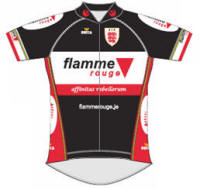Torque Talk...
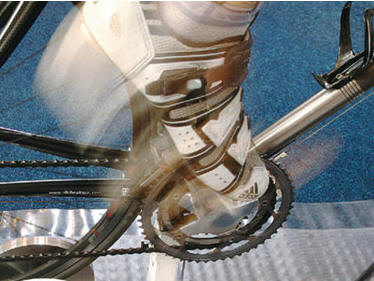
First, the caveat and disclaimer...
This is a VERY cut down version of the science and maths around a very complex subject. So I don't want a load of emails from the "Sheldon Coopers" of the world saying I've over-simplified it! This article is to help normal people understand a non-normal subject. It's not here to gain a Nobel Science award or a Wurlitzer Prize for Literature!
Torque Talk
For those that remember, "life's what you make it".
For those that don't, that was quite amusing. Okay here we're going to talk about Torque, "you can't escape it"
(enough now!). If you ride a bike, there will be torque, it's
in loads of places and performs loads of functions.
The torque we are interested in today, is the "turning force" you apply to the pedals to propel you bicyclette. No torque, no propulsion; no propulsion, no speed; no speed, no victory, the equation is that simple.
Which means, torque is really important; and probably a lot more really important than many people really realise.
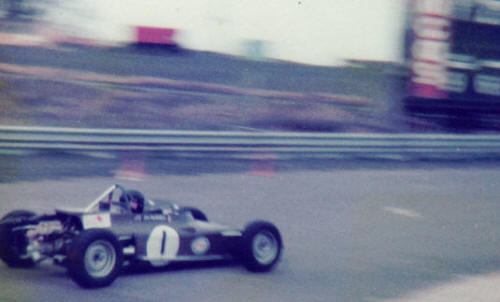
Me in 1977 ~ I was 17 and lied about my age, you had
to be 18
I forged a letter from my mum. I didn't even have a full
driving licence!
In the olden days, when I rapidly mooched about in cars rather than slowly mooching around on bikes as I now do, we had a saying, "Power sells engines, torque wins races".
Thirty years later, the premise still stands. For bikes as much as it does for cars. Everyone wants to know your, or tell you about their, power output; no one ever brags about torque.
So, off to the pedals and the important tourquey stuff...
Geeky Forces at Play
You have two dynamics at play when you pedal your bike; how hard you press
on the pedals, and how fast you turn them. The two are
indelibly linked,
you can't have one without the other.
It's the endless "exclusively mutual" combination of these two parameters that determines how fast your bike goes, and the combined physiological "physicality" you use to propel it.
Everything you do on a training ride, or race, is a trade off between efficiency and effectiveness. And most of it starts at the pedals.
Torque is measured in Newton meters, which means little to most people and not much more to me. Torque used to be measured in foot/pounds; which, as a young engineer, I really could understand and relate to.
Visualise it as a one pound weight, hung off the end of a foot long bar; there you have it, "one foot pound of torque".
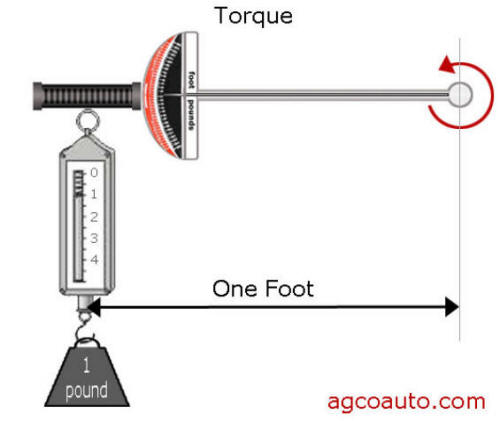
thanks to AGCO Auto of Baton Rouge for the image...
But these days, it's all gone decimal. Now, it's Newton meters, which means hanging one Newton, from the end of a one meter long bar. A tadge harder to visualise, I would suspect?
As a defined unit, a Newton is the force required to accelerate one kilogram at the rate of one meter per second, per second. Which luckily, is the speed of gravity.
A quick bit of science...
A kilogramme falls (gravity) at 9.8 meters per second squared
Which, magically, makes a kilogramme equal to 9.8 newtons!
So, 1 newton is 1kg/9.80 = 0.102 kg or (102g) or (4 oz)
Which is the weight of a banana, or a bar of chocolate, hanging off the end of a meter long bar.
When your handlebar bolt says tighten to a torque to 4 Nm, it's the equivalent leverage of hanging the one pound weight above, on the end of a one metre long bar (or spanner).
Fantastic! Now you've visualized it, we can look at how this helps us? So, stick with it a little longer please...
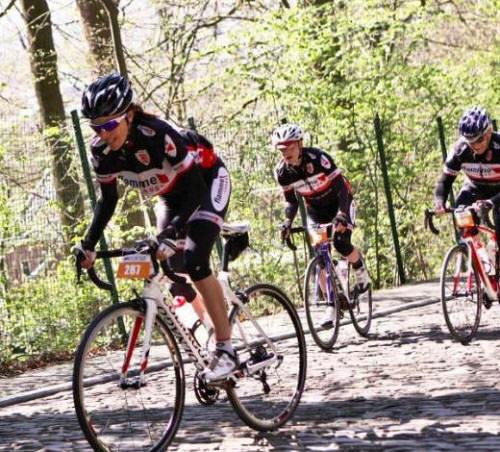
Susan Clark putting 490 newtons through her 172.5 SRM cranks
Pete Slattery & Simon Perchard
pushing slightly more!
Let's be really "generic" here and say we have your "average" female and male rider, weighing in at 55 and 70 kilos respectively.
When your average rider stands on a climb and hangs off the front of their bike, as shown here by our valiant trio on the Muur de Gerrardsbergen, they have the potential to exert, through the pedals, a force of approximately...
539 N ~ for the 55 kilo Female (55kg x 9.80)
or
686 N ~ for the 70 kilo Male (70kg x 9.80)
But knowing the application of force, means little without knowing how fast it is being applied. Now we (sort of) bring cadence in to it. Which is where it gets messy!
Bring on the Matrix...
As you all know, I do love a good chart, especially a matrix!
And this type of conundrum is the perfect vehicle for a matrix to
demonstrate simply, what we complicatedly mean.
When you pedal, you choose from two levels, of two options. You can turn your pedals anywhere between very slow and very fast; with the other option being of pushing on them very lightly or very heavily.
For each option, dependent on our current terrain, fatigue and gearing, we all instinctively choose a point on the (slow/fast) horizontal axis and the (light/heavy) vertical axis...
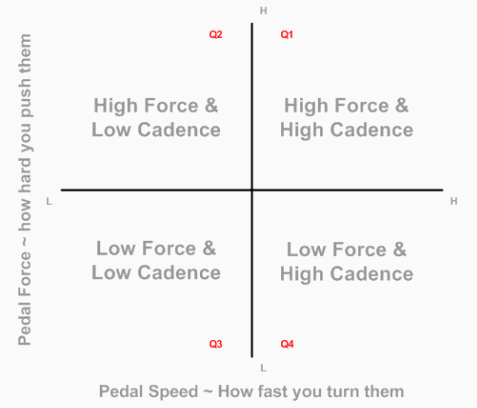
We are always pedalling at some point on this "relative spectrum". It's relative, because what you think is very fast (say 100 rpm) might be considered slow for a Keirin or BMX rider (220+ rpm). And what a 50 kilo riders considers a heavy push, might be a tickle for a 100 kilo rider!
But as you can see above we have four pedalling quadrants. Every pedal stroke you take, on every ride, will fall somewhere in that matrix, which (as explained above) is relative to you.
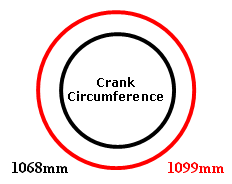 Power
Comes From Within
Power
Comes From Within
Power, which we measure in watts on our handlebar gizmos, is
a product of how hard you press on the pedals and how fast they
turn.
We're not talking about cadence as such here, because a 175 mm crank travels further, hence faster, per rev than does a 170 mm crank.
What we measure in the context of torque and power is crank "speed".
Crank speed is measured in metres per second. If we know the length of our crank, and we know it's rpm, we can calculate the speed at which the pedal (and by definition your foot (that creates the force)) is travelling.
As you can see in the chart, a 175mm crank travels 1099 mm per rev, while a 170 mm crank travels 1068mm. Revs, times distance, equals speed. And once we know the speed of the crank and the force applied to it, we have the potential to calculate power!
The (simplified) formulae are...
Torque = force x crank length
Power = torque x crank speed
Once we have the power, we can use this to calculate or measure your Functional Threshold (60 minute) Power. It's this number that sets one of the "relativity" parameters of "your" matrix. Which allows us to compare quadrants across differing builds of riders.
To place these forces in to context, we have here the same matrix, with a little background info and some ride descriptors...
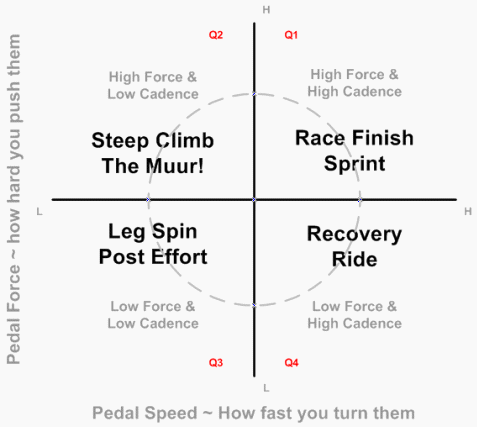
So you can see that differing riding efforts will generally require differing pedalling techniques. You would not, for instance, do a one hour recovery ride by riding in the top, left Quadrant Two (Q2) at 50 rpm in your 53x11.
And if you ain't in the top right corner of Q1, pedalling fast, pushing for all you are worth in one of your biggest gears, you ain't winning no sprint!
So needs must. But for most of the time, in most situations, we'll be hovering somewhere around that centre circle. Only moving to the outer edges of each quadrant, when a specific scenario dictates.
How does this help me?
I hear someone ask, rhetorically. In more ways than you might
think. I reply, matter of factly.
I get loads of people asking "What's the best cadence...", which is often a preface to one of the following...
▼ to ride a time trail
▼ to climb at
▼ for efficiency
▼ for effectiveness
As with every answer I ever give, it starts with, "It depends...".
Cadence and power are often given more importance than they actually deserve. Apart from my constant mantra of "it's the person with the fastest leg speed that wins the race".
Which is true when all things are equal in a sprint. If everyone is in the same gear, sprinting for the same line, from the same spot, it's normally the one pedalling the fastest, at the line, that will take the win.
But what of a 10 mile TT, a 100 mile TT, a big Tourmalet-type climb, or a 180k sportive? What then? Well then, it comes down to torque.
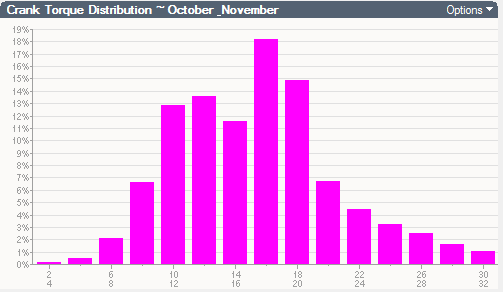
lady rider ~ torque generated through October & November training
Torque is Cheap...
Throughout our pre-training, training rides,
Slacktober and
Slowvember, it's all about riding aerobically, Zone Two, spinning
away, smelling the flowers. No effort, no fuss, no drama.
Just "normal" riding.
Which returns a torque distribution chart similar to the above. For thsi rider, torque levels centered around 14-20 Nm. Mainly Quadrants 3 & 4; and mainly around the semi-circle below the line.
But when we get to our Undulating Rides, normally in December, we ride slightly over geared (we don't want to tweak a back muscle or knee joint) to develop leg strength, core strength and build torque tolerance.
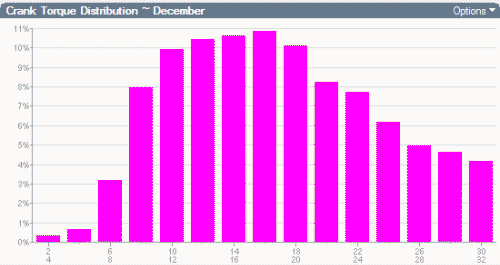
We're now in to Q2; low leg speed and high levels of force pushing on the pedals. As you can see, the same riders' chart has now taken a very distinctive shift to the right. It's a leg stinger, that's for sure.
Some people scoff at our rides, because "they aren't fast enough". But when you look at the levels of force being applied through our pedals, you can see that this takes it to the next level. This is the level of effort that, when the time is right, will bring speed others can only dream of.
And this is "free stuff". You're going to be on your bike anyway, so instead of trying to "race the climbs" in the winter, and fail, why not ride them slow and prepare to succeed?
Spend longer on the climb, maximise your training time the speed will come when the time is right. It's not a difficult or expensive choice to make.
In January we take this extra strength in to our normal Climbageddons circuits (Q2 & Q1 borders); high force, medium leg speed.
February we consolidate with the Q1 high leg speed sprints and drills of the Classics Circuits.
And in March, just as the season starts, we give it large with our (Q1 & Q4 borders) Speedfest Sessions; medium force, high leg speed.
But our "medium" after undertaking specific torque drills in December and January, is the equivalent to non-torque-trained riders' "high" force. As I said earlier, it's all "relative".
Use The Matrix
In effect, for our winter weekend endurance rides, we travel around the
matrix. Slacktober is
"predominantly" in the circle area of Q3.
Slowvember is in the circle area of Q4.
Climbageddons are in the mid to upper right quadrant of Q2, outside the circle! And the Classics Circuits are in the mid to upper left of the outer area of Q1.
Finally, just before our season starts, we carry out our speed work, which concentrates on extended periods inside Q1's circle quadrant.
But you can do this any time of the year. Just once in a while, make a conscious effort to ride slow and boost your strength. There's an excellent session below that you can do once a week for a month. Why not give it a go; what have you got to lose?
Quadrant Analysis
flamme rougers
have been riding this way for many, many years, but now we have all
the gizmos and software we need to record, track and monitor it in
real-time.
We can capture all this sexy data, and analyse it in more depth to ensure we are operating in the right physiological areas. Once you get in to this stuff, you understand why heart rate isn't that important!
A quadrant analysis, takes every pedal stroke you make and maps it as a frequency distribution across the matrix described above.
Sadly, there are two new acronyms we need to explore before we go much further. We now have the abbreviations AEPF and CPV.
AEPF is the Average Effective Pedal Force. You can not apply much force to the pedals when they are in the vertical, "six o'clock" position. But you can apply loads when it's moving from the "one to four o'clock" positions.
AEPF takes these varying vector forces and averages them out over the full 360 degrees of crank rotation. AEPF is how hard you have pressed on the pedals around the full circle.
As an aside, there's a strange, but consistent relationship, that the maximal pedal down-stroke forces, are almost double the total AEPF.
CPV is the Circumferential Pedal Velocity, a fancy name for the speed the pedal is travelling, in meters per second. It's how fast you turn them around the circle. It's not cadence, but it is cadence related.
Here's what a Quadrant Analysis (QA) chart looks in "real life"...
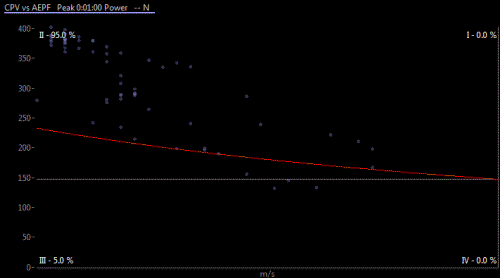
one minute, big gear, low leg speed climb
This is for a one minute "neuro-muscular" development climb. I spent 95% of the climb in Quadrant 2 (high force, low cadence) and "drifted" down in to Quadrant 3 (low force, low cadence) as I cleared the crest.
The red line indicates point at which my leg force and my leg speed produce my FTP. The high/left and low/right ends of the line are showing the exact same power output ~ my FTP.
This is important because the same power can be produced in two ways. Three hundred watts can come from stamping on a big gear very slowly, or spinning a low gear very quickly.
By analyzing the relationship between the dots and this data we can measure the muscular fatigue of the athlete.
As a comparison, from the same ride (Valentine's Day 2016) here's a peak five second reading from a ten second sprint...
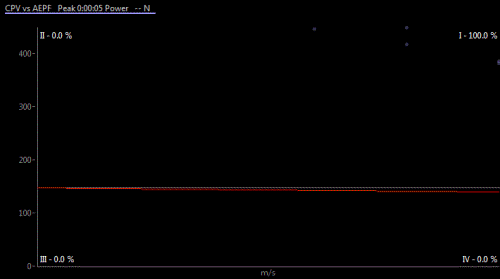
As you can see (and would expect) 100% in Q1; with no degradation! We like to track degradation, as this gives us a clue, along with pedal speed, of the contribution made by fast-twitch (type II) muscle fibers, our ATP-PC levels and neuro-muscular fatigue. All things that are "trainable" when the time is right.
Izzy Wizzy Lets Get Busy...
Okay, now it's time for the smoke and mirrors stuff. As I said
earlier, there's more to this pedalling lark than first appears.
But first, another version of a matrix chart...
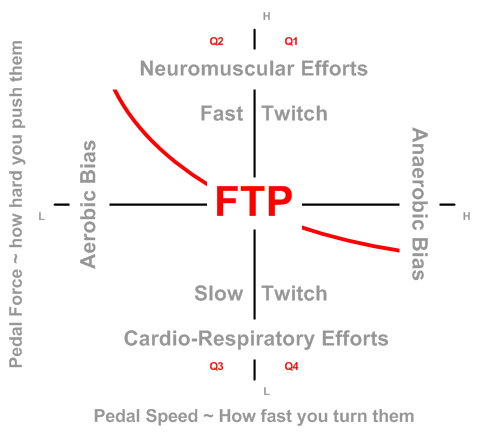
there's a log going on here, but it will all make sense shortly!
We can tell a lot from the way a rider pedals. And this graphic tries to capture most of it, without getting too clumsy. Although I do admit, it is a little bit busy! We'll start at the top and work down.
Upper Q1 & Q2 efforts are predominantly, fast-twitch, neuro-muscular. Which means it's the thighs, quads and glutes etc, that contribute the most. Not exclusively remember, because everything we do is on a continuum. There is no lactate, aerobic, ventilatory threshold; ever!
Work undertaken to the left of the matrix has a predominantly aerobic bias, getting more anaerobic as we move to the right. So when you climb pedalling slowly, at a muscular 300 watts, in a big gear, you can keep your heart rate under control.
When you pedal quickly, and climb at 300 watts, in a small gear, even though your power is the same, your heart will beat quicker. There is less of a muscular contribution and a greater cardio-respiratory contribution.
Lower Q3 & Q4 efforts have a greater cardio demand and leave the muscles alone! Ironically, the faster you pedal the more use you make of your slow twitch muscle fibers. Sparing the fast ones for the sprint.
This is why the pros do so much (Q3 & Q4) Zone Two work; create a huge aerobic, glycogen sparing, slow-twitch predominant, efficient engine to get you to the end of the race.
Then smash the sprint with your "untouched", glycogen rich, fast-twitch fibers, in a Q1, race winning crescendo.
And as you can see, at the dominant centre of all this, is your Functional Threshold Power. Your FTP is the anchor, around which everything else pivots. Again, it's another slight misnomer, there is no "threshold" but it is a performance marker and the name has now gained traction.
Think of it more as "functional performance power".
Useful Practicalities
For about the fifth time of mentioning in this factsheet, all
the numbers, positions and terms mentioned here are "relative".
The "cross-hairs" of the matrix are set using two factors.
The horizontal line denotes your FTP. The vertical line denotes your "average", self-selected, leg speed (cadence). So the bang-centre of the hairs gives your FTP at your most "efficient" selected legspeed. If you were undertaking a 25 mile Time Trial, this is where you would want to sit.
If climbing a mountain, you would want to make sure you never went anaerobic. And if it's a big one (Ventoux or Tourmalet), you would want to make sure you never went over your FTP. If your FTP is your best 60 minute power, you ain't gonna make it up Ventoux in under an hour!
You can also retrospectively look back at race data and find out what proportions of time you spent in each quadrant.
Be careful not to compare training rides, becasue in those you get to choose what you want to do when you want to do it. In a race, there are other variabls that come in to play.
Useful Practicalitites
Physiological Indicators
Other bits of information that the coach (or a self-managed rider)
can glean from a QA analysis, centre around physiological
indicators, and a riders' predisposition to a style of riding that
may be hindering their current, or future development.
rotational equilibrium
My golden rule to all is, when training you want to expend as much energy as possible. When racing you need to conserve as much energy as possible. You'll find the race winner is usually the person that has drawn the least form their energy bank.
Red pill blue pill
To lift 75 kg, 1 metre in 1 second takes 735 watts, which is one horse power!

